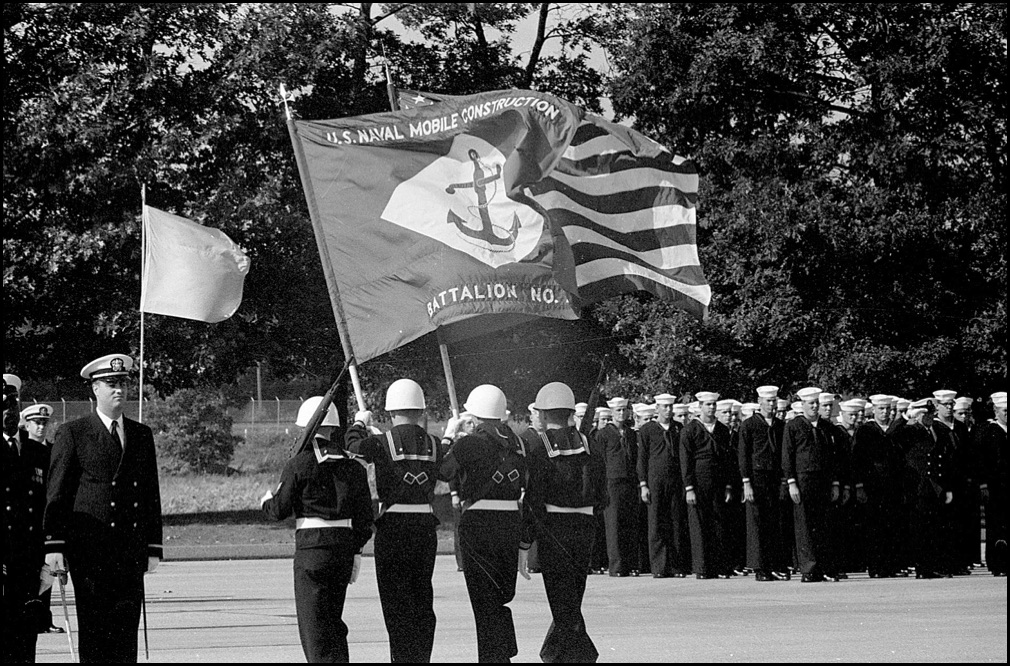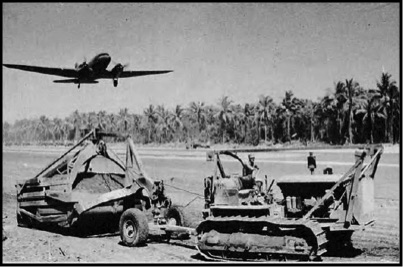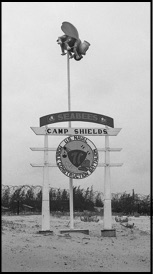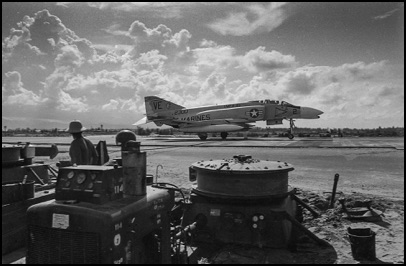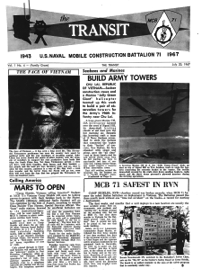The Book:
SEABEE71
IN CHU LAI
A 350 page memoir of a Navy Journalist's 14 months with the Seabees.

Photographs and text copyright © 1967 and 2019 by David H. Lyman
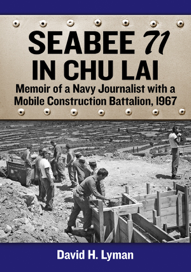
Toward the end of June 1945, all organized Japanese resistance on Okinawa came to a halt. On September 2, 1945, the formal surrender was singed aboard the Battleship USS Missouri in Tokyo Bay.
A few days later, September 7, 1945, marked the second anniversary of Seventy-One’s deployment to the Pacific, and MCB-71 was inactivated in December 1945.
1966 to 1975
The Book: Seabee71 In Chu Lai and the pages within this website tell of the Battalions exploits from its inception in the summer of 1966, to when I left in November 1967.
MCB-71 returned to Chu Lai in the spring of 1968 for one more deployment. This time to Camp Miller, the other Seabee camp on Rosemary Point—not as nice, I hear, as Camp Shields. The CO and XO returned, as did half the original Battalion, only to decommission Camp Miller before returning home to Davisville. MCB-71, never returned to Vietnam, yet the war continued for another 7 years.
The Battalion with other officers and men completed projects on Puerto Rico and Antartica. In the summer of 1972 to 73, Seventy-One built a base at the South Pole, and another, Camp Sipple at (75 degrees 55 minutes South x 83 degrees 55 minutes West), an 4-man wintering-over research faculty. The Battalion’s last assignment was the de-militarization of the NSA (Naval Air Station) on Bermuda in the spring of 1975. The unit was decommissioning in Gulfport, MS later that summer.
Editor’s Note: Above is a brief history of MCB-71 in World War II. A more extensive history is in my memoir, Seabee71 In Chu Lai More details can be found in the Completion Report of Seventy-One’s 1944 and 45 Pacific deployment, available as a PDF download from the Naval History & Heritage Command, at: www.History.Navy.mil.
A more colorful rendition of 71's WWII deployment can be found in their Cruise Book, also available as a downloadable PDF from the above link.
MCB-71's two cruise books from 1967 and 68 are also available as PDFs from the same sit.
